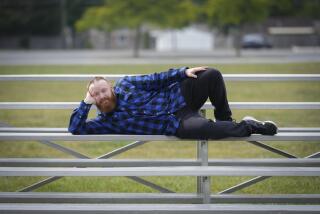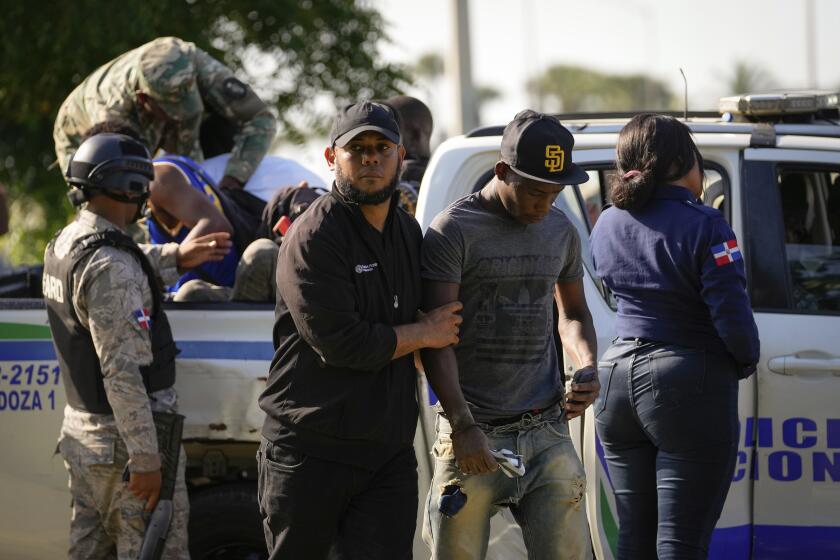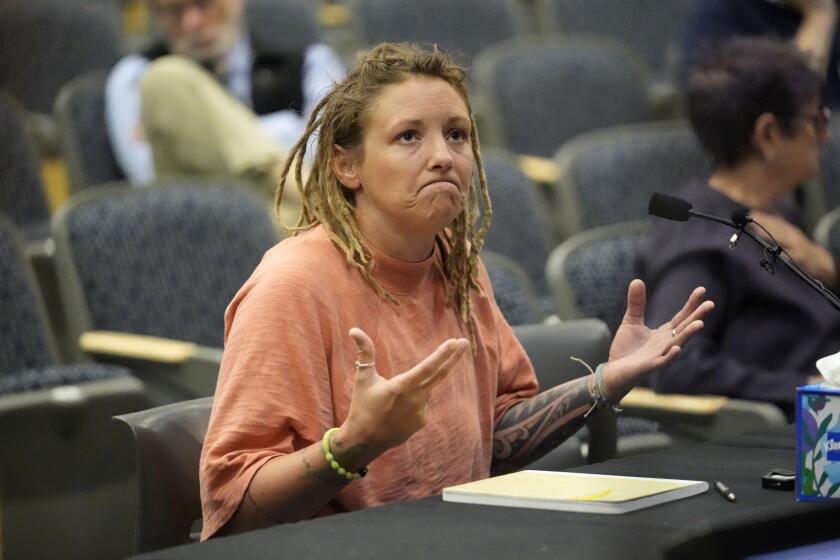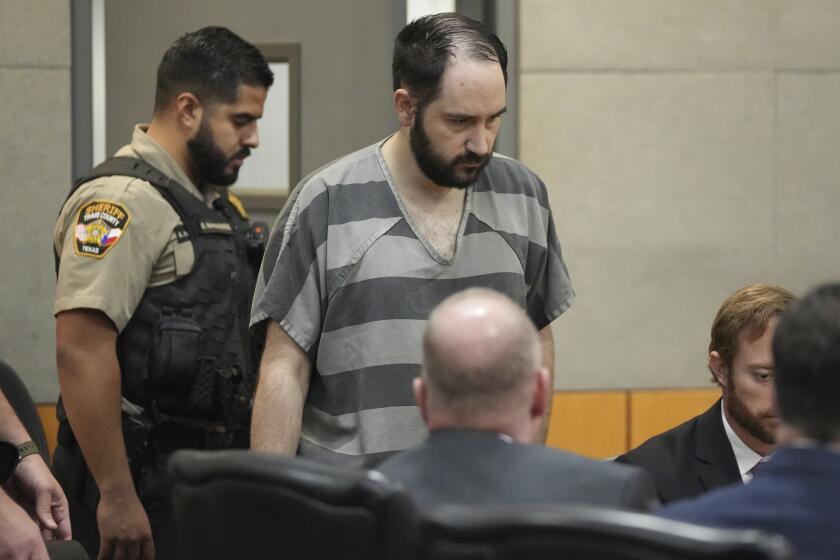Courtney’s Just Horsing Around
“Walk on.” With those two words, Courtney Marshall enters another world -- a world in which she is able to move freely.
“Walk on,” she tells her horse, Chico, who slowly carries her forward, bringing a grin to her face.
Like many 10-year-olds, she doesn’t say much to those she doesn’t know, especially when she’s on her horse. She smiles bashfully and tucks her chin to her chest when addressing someone for the first time. But unlike most 10-year-olds, Courtney needs the help of a walker or an extra set of hands to steady her.
She was born with spastic diplegia, a form of cerebral palsy that prevented her from developing leg muscles strong enough to support her. Her movements are awkward.
As her brilliant blue eyes dance playfully behind tiny oval glasses, she glances to her mother for support and her fingers nervously twirl locks of her hair.
Ask about the tricks she can do while astride Chico, however, and any hint of shyness evaporates.
“I can ride on my hands and knees,” she says proudly, her voice rising with a strength it lacked moments before. “I can ride backward
Anything else? “Yeah,” she says. “I can trot. I really like to trot.”
Suzi Luciano recalls the day she brought her daughter to Central Kentucky Riding for the Handicapped, a barn at the Kentucky Horse Park, nearly two years ago.
“It was the first time she’d ever been around a horse, and she was a little bit intimidated,” Luciano said. “There was some fear in her eyes.”
But once she got a chance to ride, Courtney found something she truly loved. “Her confidence level shot way up, and she became more independent almost overnight,” Luciano said. “She’s continued to grow stronger both physically and emotionally the more we’ve come out here.”
About two of every 1,000 births in the U.S. result in some type of cerebral palsy. Studies have shown at least 5,000 infants and toddlers and 1,200 to 1,500 preschoolers are diagnosed with cerebral palsy each year. Spastic diplegia accounts for more than half of that total.
Courtney giddily waves to her mother several times as she goes through her litany of tricks.
She gets up on her hands and knees on the bareback pad, holding onto the reins as volunteers walk on either side of her. Soon, she is up on her knees as two volunteers, both with training in physical therapy, steady her.
Before long, she is riding sidesaddle, legs dangling over Chico’s left side for several passes from one end of the paddock to the other. Then she switches to the right.
She giggles as she plops back down on the pad -- backward this time -- and tries to catch several balls tossed to her as she rides.
“Got it,” she squeals as she makes a catch. “Did you see?”
Finally, it’s time to trot. She turns to face front and tells Chico confidently: “Trot on.”
Her laughter increases as Chico’s gait quickens. Her plastic helmet slides down over her eyes as her head and upper body bounce in rhythm with the horse’s stride. Several minutes later, Courtney seems all laughed out and is ready to catch her breath. “Whoaaaaaaa, Chico. Whoaaaaaaa.”
Her grin grows wider as she dismounts and is led toward Chico’s head, which is nearly as large as she is. She flashes her mother a mischievous glance as she pats the docile equine on his nose.
Janice Kuperstein, an associate professor of physical therapy at the University of Kentucky’s College of Health Sciences, has run this program for four years as an elective in her physical therapy curriculum. A similar program has been available at Central Kentucky Riding for the Handicapped for more than two decades.
“Most of these kids can’t do a lot of things their peers can do,” said Kuperstein, a New York native who moved to Kentucky’s lush green hills fnearly 18 years ago. “But they can ride a horse, and not all of their peers, even the able-bodied ones, can say that.
The program has two eight-week sessions in April and August. Many volunteers are graduate students who choose to work as part of Kuperstein’s course.
Over the last four years, about 180 children and adults have entered the program. Many have been readmitted multiple times because of continuing therapy needs. About 40 are on a waiting list.
Kuperstein sees children with cerebral palsy, muscular dystrophy, Down syndrome, sensory integration impairment and myriad crippling conditions.
Riding not only strengthens muscles that may not be used often, it improves motor skills and boosts confidence in social situations, said Beth Ennis, assistant professor of physical therapy at Bellarmine University, Louisville.
“Most young people equate physical therapy with work, and who wants to work?” Ennis said. “Put them in an alternative environment in which they get to interact with horses, and it becomes play instead....”
Kuperstein says she has taken a special pleasure in watching Courtney flourish. “You look at her with her rolling walker and then you see her up on a horse and it’s like she’s transformed into this totally different person,” she said. “She seems to have this sense of freedom and confidence when she’s up there.”
Luciano watches Courtney nuzzle Chico and explains what riding means to her daughter. “This is the one thing we’ve found that she just loves with all her heart,” she said. “... You can see on her face how much it means to her. There’s nothing more special or important than that. Nothing.”
More to Read
Start your day right
Sign up for Essential California for news, features and recommendations from the L.A. Times and beyond in your inbox six days a week.
You may occasionally receive promotional content from the Los Angeles Times.






